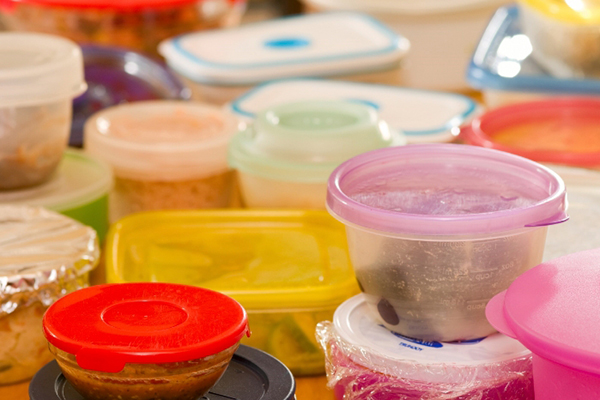In today’s world, plastic containers are a staple in kitchens worldwide due to their convenience, affordability, and versatility. However, not all plastic containers are safe for food storage. Understanding which plastics are food-safe is crucial to ensure the safety and health of consumers. This article delves into the different types of food-safe plastic containers, highlighting the importance of proper selection and use, focusing on the increasing popularity of acrylic boxes.
Understanding Food-Safe Plastics
Food-safe plastics are materials tested and approved by regulatory agencies such as the U.S. Food and Drug Administration (FDA) for storing food. These plastics do not leach harmful chemicals into food and can withstand typical conditions like refrigeration, freezing, and microwaving without degrading.
Types of Food-Safe Plastics
- Polyethylene Terephthalate (PET or PETE): Commonly used in single-use beverage bottles, salad dressing containers, and peanut butter jars, PET is known for its strength and clarity. It is lightweight and resistant to impact, making it an excellent choice for packaging.
- High-Density Polyethylene (HDPE): This durable plastic is used in milk jugs, juice bottles, and containers for yogurt and butter. HDPE is known for its resistance to impact and can withstand hot and cold temperatures without releasing harmful substances.
- Polypropylene (PP): PP is used in containers for yogurt, margarine, and deli foods. It is known for its high melting point, making it safe for use in microwaves and dishwashers. PP is also resistant to chemicals and moisture, ensuring that food stays fresh.
- Low-Density Polyethylene (LDPE): Found in squeezable bottles, bread bags, and some food wraps, LDPE is flexible and resistant to moisture. While it is not as strong as HDPE, it provides excellent protection for lightweight, perishable items.
- Polystyrene (PS): Often used in disposable plates, cups, and takeout containers, PS is lightweight and can be made into both rigid and foam forms. However, its use has been somewhat controversial due to concerns about its environmental impact and potential health risks when heated.
- Polycarbonate (PC): Known for its clarity and strength, PC is used in some reusable water bottles and food storage containers. It is highly durable and can withstand repeated use. However, consumers should be cautious as older polycarbonate containers may contain BPA, a chemical that can leach into food and pose health risks.

The Rise of Acrylic Boxes
Acrylic, a type of plastic known for its clarity and strength, is becoming increasingly popular in food storage. Acrylic boxes are now commonly used in homes, restaurants, and retail settings for their aesthetic appeal and practical benefits.
Benefits of Acrylic Boxes
- Clarity: Acrylic boxes offer excellent visibility, allowing users to see the contents without opening the container. This feature is particularly useful for organizing and displaying food items in a visually appealing way.
- Durability: Acrylic is highly durable and resistant to impact, making it a reliable choice for both home and commercial use. Unlike glass, acrylic is less likely to break or shatter, reducing the risk of injury and loss of food.
- Lightweight: Acrylic boxes are lighter than glass containers, making them easier to handle and transport. This feature is especially beneficial for catering services and food vendors who need to move large quantities of food.
- Versatility: Acrylic boxes come in various shapes and sizes, suitable for storing a wide range of food items. They can be used for everything from dry goods like pasta and cereal to baked goods and fresh produce.
- Non-Toxic: Food-safe acrylic boxes are made from materials that do not leach harmful chemicals into food. They are an excellent alternative to some other plastics that may pose health risks.
Proper Use and Maintenance of Acrylic Boxes
To ensure that acrylic boxes remain food-safe, it is essential to use and maintain them correctly:
- Cleaning: Clean acrylic boxes with mild soap and water. Avoid using abrasive cleaners or scrubbers that can scratch the surface, as scratches can harbor bacteria.
- Avoid High Heat: While acrylic is durable, it is not suitable for use in microwaves or dishwashers. High temperatures can cause it to warp or release harmful substances.
- Inspect Regularly: Regularly inspect acrylic boxes for cracks or signs of wear. Replace any damaged containers to maintain food safety.
Conclusion
Choosing the right plastic containers for food storage is crucial for health and safety. While various plastics like PET, HDPE, and PP are commonly used and approved for food contact, the rise of acrylic boxes offers an attractive and practical alternative. Acrylic boxes provide clarity, durability, and versatility, making them an excellent choice for both home and commercial use. By understanding the properties and proper use of these containers, consumers can ensure their food remains safe and fresh, enjoying the convenience and benefits that modern food storage solutions provide.
Post time: 07-25-2024



